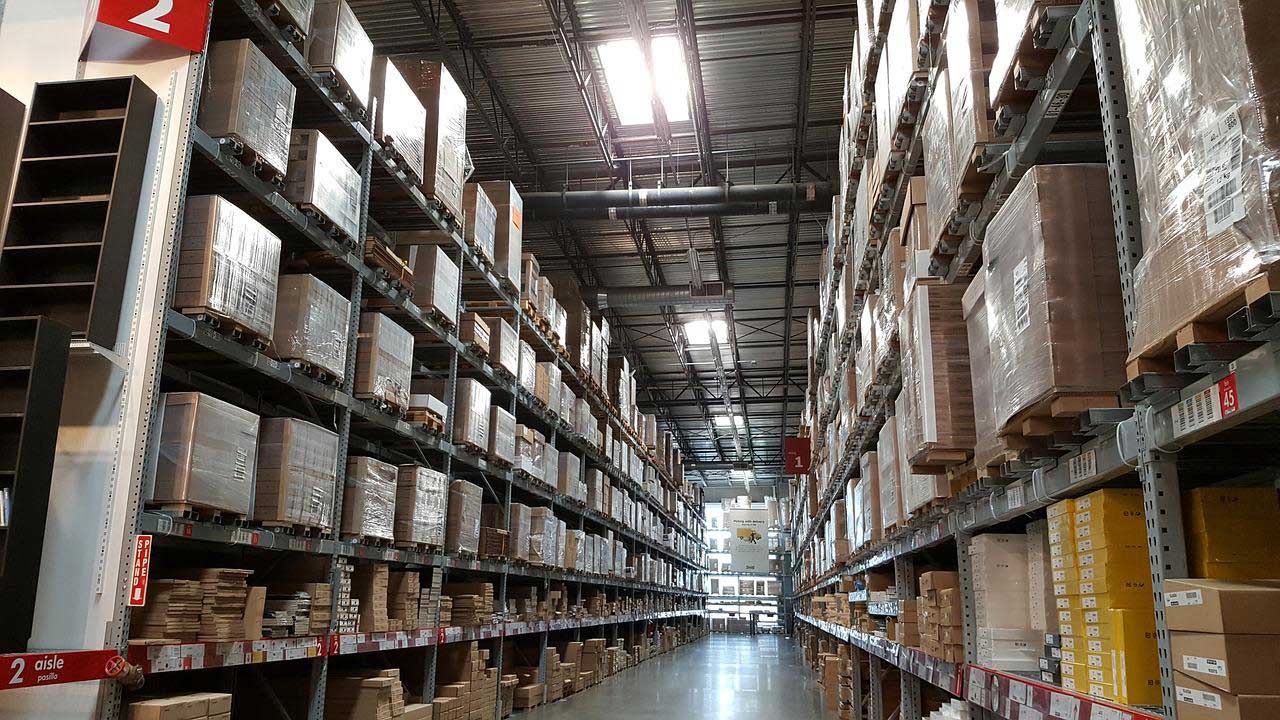Jump Ahead To:
If you’ve ever put holiday ornaments or toys in an attic or crawl space, remember how hot and stuffy it was up there? Did some keepsake get ruined? Then you know why climate-controlled storage makes sense.
You’re not alone if you are considering renting a storage ‘container.’ Life is complicated, we get that. Surprises happen. And then there is all that ‘stuff.’
Nearly 40% of US households use storage units, according to STORAGEcafe, a nationwide, online search company for self-storage units. Most often it is because folks are down-sizing or moving or just need more free space at home.
If you’re thinking about renting a storage unit, one key decision is paying extra for climate-control. We’ve got some observations and tips that could save a lot of blame and misery later. By the way, we’re Bellhop – and we can help with moving your stuff in and out of storage. You can even book storage directly through us via our storage partners.
What is climate-controlled storage?
Climate-controlled storage measures the indoor temperature of the structure and adjusts, attempting generally to maintain a temperature range appropriate for items (not people), typically 55 degrees Fahrenheit to 85. Some properties may also attempt to control for humidity. This too is desirable, though more problematic in large buildings.
What are climate-controlled storage units?
These are storage units one may rent inside an enclosed storage facility. It’s important to note that one’s belongings ‘share’ the same indoor thermostat controls. Some units in a building may benefit more than others if they are close to ventilation ducts. (One more reason why it’s a good idea to walk the building before you commit to an individual unit).
Do I need climate-controlled storage?
The answer gets complicated and depends on your situation and an honest assessment of your belongings. Climate control is worth it if:
- You plan to store the following:
- Temperature-sensitive items: art paintings, photograph albums, antiques, most wood furniture, most electronics
- Humidity-sensitive items: important papers, mementos
- Storing during seasonal weather changes and you live in a region with large temperature or humidity variations. (With today’s climate variations, that means just about everywhere).
- Longer term storage is likely. Rule of thumb – 7 months or longer. Think open-ended.
- Undefined storage period: Let’s say you put items in storage while remodeling your home. Remodels rarely go according to plan. Delays are inevitable.
- If damage would impact an important relationship: Is your partner’s wrath worth it?
- How important is my stuff to me or us? Keepsakes or stuff I may donate later. This is tricky and requires some emotional honesty.
Tips for choosing climate-control storage (or not)
Tip #1: If unsure, one option is to rent two smaller units – one with climate-control and one without.
Tip #2: If undecided, get your household involved in the decision beforehand. This can save a lot of blame and finger pointing later.
Tip #3: If the replacement cost is significant (think furniture), go with climate-control.
Do I need climate-control storage for short term storage?
Most likely no. Most items will be okay for periods up to four to six months. Trouble can happen when ‘short’ turns into longer.
What’s safe to put in non-climate-controlled storage?
Rule of Thumb: If you would put the item in your attic where there is no temperature control, it will probably be okay in a ‘regular’ storage unit. You can see there’s a lot:
- Appliances (without a lot of electronics. Kitchen stuff. Not TVs, computers, game controllers)
- Hardware and tools
- Metal and plastic patio furniture
- General and business papers – maybe not that tax related info
- Clothing (securely boxed against rodents)
- Drapes and carpets (securely boxed against rodents)
- Holiday ornaments
- Kids memorabilia – Barbie collection (think about it)
- Your ex-partner’s stuff (maybe)
- Stuff you’re gonna (probably) get rid of but not now.
How to rent a climate-controlled storage unit
- Start early. Storage is in demand, particularly during ‘high move’ periods, e.g., end of school when families and students tend to move.
- Get on a waiting list. You may have to.
- State your preferences and stick to them. You may find the perfect unit but without climate-control. They may attempt to persuade you that it will be okay. Only you know for sure.
How can you best protect items in storage?
- Don’t place moldy or mildewed items in storage. It will get worse.
- Choose packaging appropriate for the items. Paper wrapping will absorb humidity and may accelerate damage to objects like framed art pieces. Better to wrap them in plastic bubble wrap.
- Don’t move items on rainy days when they may get wet, or protect them if you do. The moisture will linger inside your unit.
- Ensure airflow in the storage unit when you load it.
- Store items off the floor on palettes or cinderblocks
- Protect against pests.
Helpful storage unit tips and hacks
- Check your insurance to determine if they cover out-of-home scenarios. Rental of a unit may require a special rider and careful inventorying.
- Don’t place irreplaceable items in storage: This is your stuff. But it’s not under your control. What could go wrong?
- Fire
- Flood and other acts of nature
- Pest damage
- Theft.
- Don’t place items with lithium batteries in storage: These batteries are highly flammable and catch fire in extreme temperature environments. Wrapping them in clothing to insulate them only makes this worse.
- Fill the storage unit strategically with items you may need to access readily available.
- Have a layout strategy for item packing and placement in your unit.
- Don’t mix items from separate rooms in the same box. Pack kitchen items with other kitchen items.
- In the unit place room contents together and make a map so you know where you put the kitchen items, for example
- Photograph the box contents or make a list, and number the box.
- Visit your unit regularly to inspect the company site and your unit.

How to choose the best storage unit
These suggestions are mostly about finding units that may experience less radiant heat from outside walls or the roof.
- Find north-facing units. Think about the sun on the side of the storage unit. Remember people don’t live in these structures so climate control may be minimal. So may the air circulation inside. A north facing unit may remain cooler in some climates.
- Inside hallway-access units may stay cooler. Smaller space units may be on an inside hallway, meaning they don’t have an outside wall that will absorb heat.
- Lower level units are likely to stay cooler.
- What works for you: You may need an outside facing 10×20 with a garage door style entrance. These are more likely to get warmer but it may be a worthwhile tradeoff given the weight and quantity of items you need to move.
How to choose the best storage company
- How do you feel about driving to storage? This can feel like a chore at times. Finding one nearby is one solution. Another is an innovative solution like PODS, then removed. We partner with PODS.com and appreciate their innovative convenience.
- Price: We all like deals, but pricing is pretty comparable, as you will see if you shop online. Look for move-in deals that offer a free month or something similar.
- Location: Storage unit business models seek low-cost land. With recent weather extremes, maybe reconsider if the site may flood.
- Look for structural ventilation: Simple roof-style ventilation can promote air flow.
- Search online but decide on location. Ensure that online claims match up with reality. Look for mouse droppings, dirt or poorly swept floors.
- Trust your nose: If it smells bad inside, your clothing will come out smelling bad too.
- Snoop: If storage is in open, mesh-walled cubicles, what do the neighbors’ items look like? How about theft through the mesh walls?
- Reputation: We hate to bring it up but read the reviews.
- Visit the storage company at night: How is the lighting, gate, and fencing? Does it feel secure or sketchy?
- On-site managers can add a sense of security and deter break-ins.
Need help finding storage? Or moving in or out of storage?
Bellhop partners with storage companies nationwide. Plus, we can help move your items in and out of storage to wherever: local or across the country. We make moving simple and pain-free. We provide several moving services to help you out, including hourly labor, local moving, last-minute moving, commercial moving, and more. If you need reliable movers who will be there as promised, we’re the ones for the job.
Find movers near you today.
- How to Pack Lamps for Moving - July 15, 2024
- How to Pack Chairs for Moving - July 9, 2024
- Best Moving Companies in Atlanta - June 26, 2024




